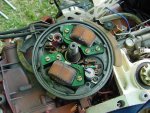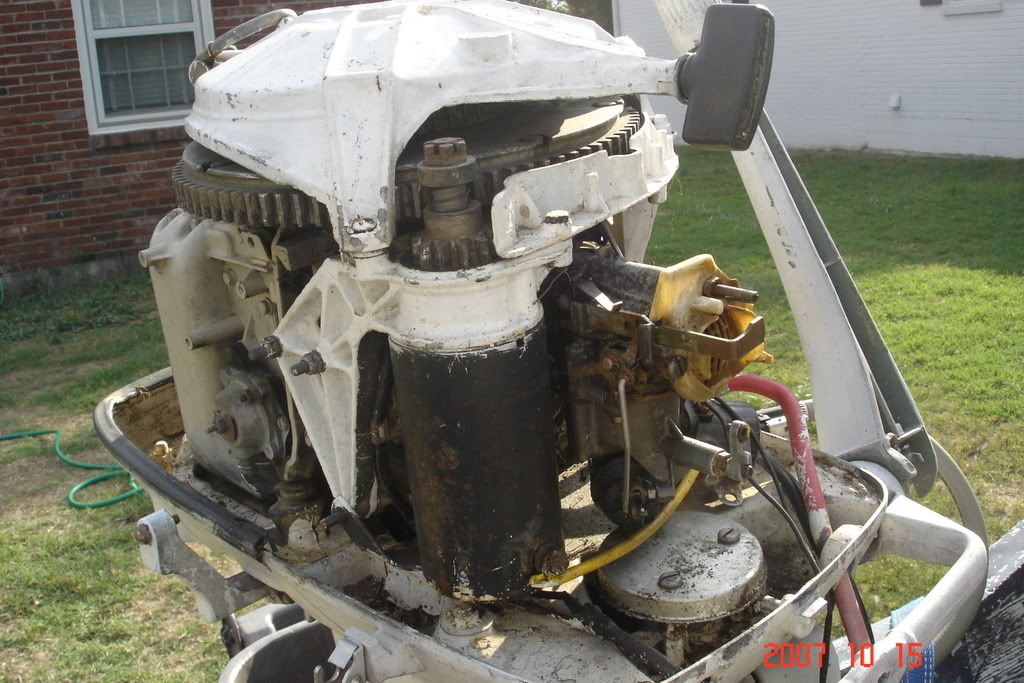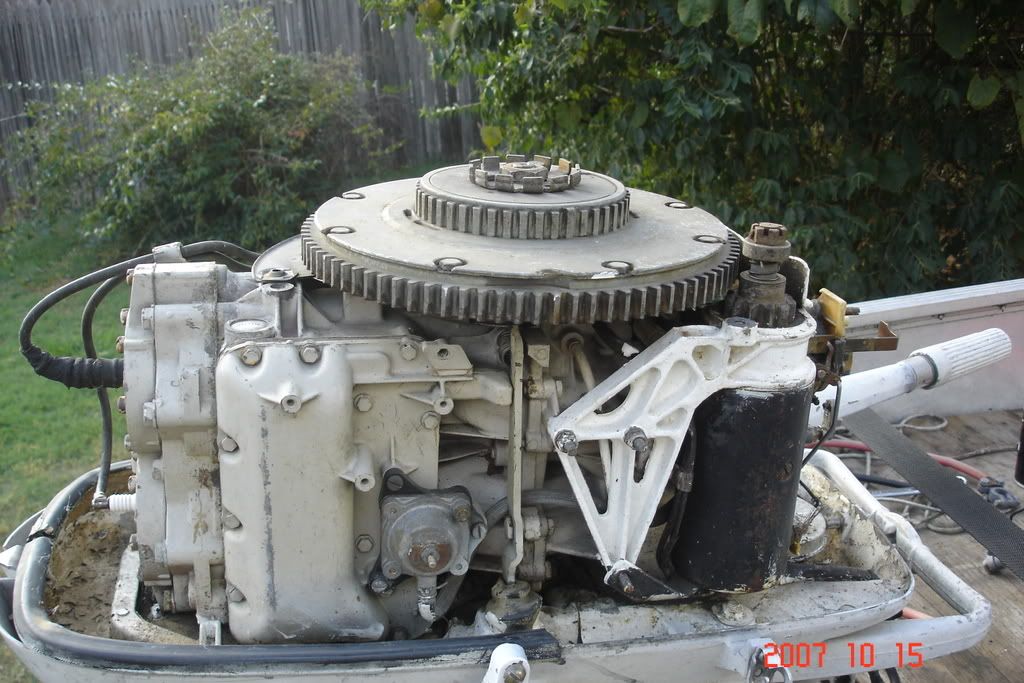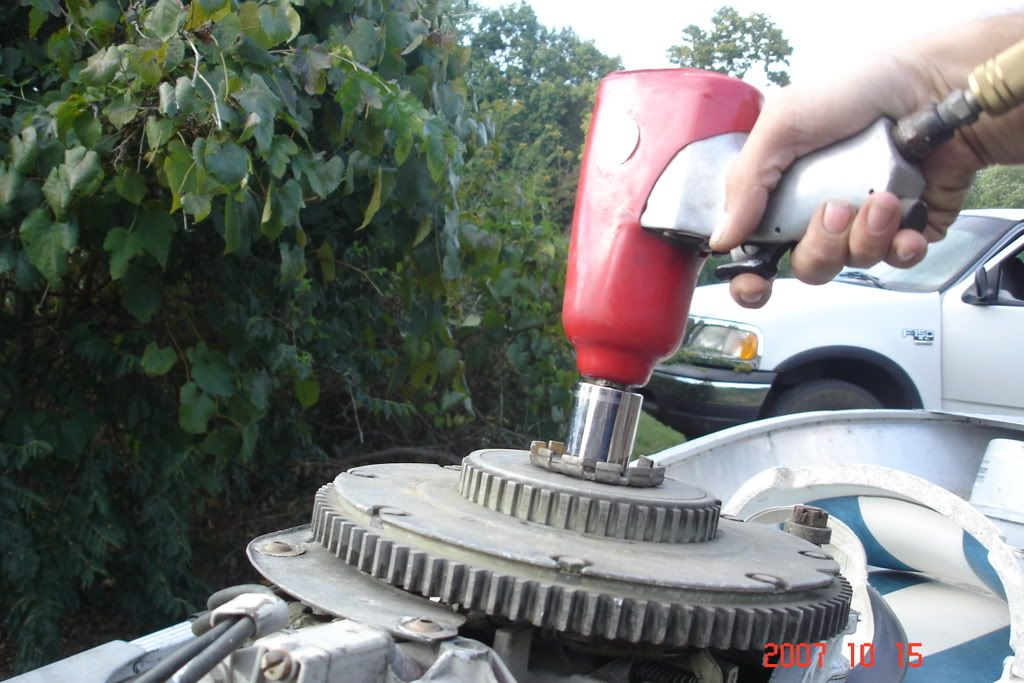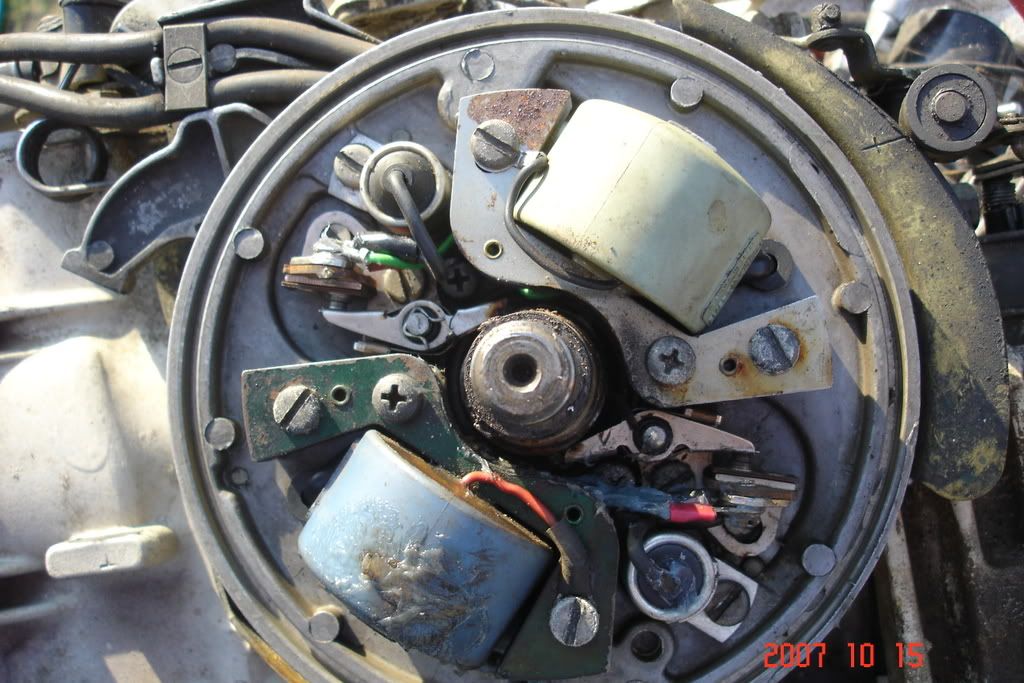Re: '66 johnson 33hp
Just a few observations based upon your comments and photos -
Do a compression test and check the lower unit for signs of water or metal shavings before you spend any money on this motor. It is obvious to me that the previous owner didn't know much about taking care of it or repairing it.
On the compression check, it would be nice if you got readings of about 100 lbs or more but you may not. If the readings are somewhat less but within about 10% of one another in value, it will probably run ok if everything else checks out. If there is a lot of difference in readings between the cylinders, the motor will probably not run well. One quick and easy (if not so scientific) way to check for this is to simply use a socket/breaker bar to rotate the engine via the crankshaft nut - you can often feel the difference in compression as each piston reaches "top dead center" (TDC). BTW, be careful of the compression gauge that you use because some have inserts with long threaded portions on them and they will hit the piston crown at TDC if they are screwed in all the way.
If you find water and/or metal shavings in the gear oil, you have problems that need to be fixed. Water indicates bad seals and metal shavings indicate abnormal gear or clutch dog wear. The last time I had a couple of these lower units resealed, it cost me about 100 bucks each and that was by a friend who owns an OMC dealership. I am sure that the bill would have been higher if he charged me actual hours plus parts, rather than a flat "friend" rate. If the clutch dog is worn, the portion of the gears where it meets often will be too. Clutch dogs are probably about 75 dollars for this motor now and the gears will most likely have to be "cut." If the metal shavings are due to other wear, the lower unit is pretty much junk to most people because they are insanely expensive to replace. A better option is to simply find another lower unit.
I also recommend rebuilding the water pump while you are doing all of this, especially if you have to pull the lower unit anyway. Once again, its not hard and not hugely expensive, particularly if all you need is a new impeller.
My guess is, that the reason why the previous owner made the silicone mess all over your armature plate & associated parts, is probably because he was trying to seal a crack in the lower left (in your photo) coil. I recommend that you replace it. Depending on your budget, you might want to replace both of them. If in doubt as to condition, your local OMC dealer can test them. I would also replace the points and condensors, both because the parts are cheap, and because its easier than trying to make sure you get all of the silicone off of them. For the most part, the mere presence of silcone on some of the parts isn't the problem, its the loose bits of it getting into the breaker point gaps that could cause problems.
The vacuum cutoff switch on the motor (the square thing with the vacuum hose on the bottom and the screw post in the middle) isn't hooked up electrically. There should be a black wire coming out of the bottom of the armature plate to the screw post. If this has been merely disconnected, reconnect it. If it is missing, you should replace it. The unit also needs to be grounded via the second screw post on the upper right side - double check me on this because I am writing all of this from memory but I believe I am correct. There also appears to be either white silicone or paint on the vacuum hose - replace that too. What this device does is to short out the front coil on the motor if it goes into an overspeed condition, which sometimes happens if you make a rapid and large reduction in throttle setting. I know that sounds weird but suffice it to say its "a vacuum thing." While you could run the motor for years without this happening, if it does the cutout switch will save the powerhead.
The intake cover on your carburetor is broken on the top, right corner. There should be a knob there with a rod that goes to your high speed needle valve - see the connector on the lower needle valve on your engine, which has an empty hole in it where the rod would fit. The knob is also missing on your low speed needle valve. Also, you have an electric choke on this carb (round cylnder on the bottom) but I can't see if it is hooked up or not. There should be a tab on the bottom, back of it for a 12VDC lead from the choke switch. Its not the end of the world if you don't hook it up but they are handy.
My personal preference with motors like this is to rebuild the carb. The rebuild kits are cheap and its not hard to do if you have a decent service manual and are reasonably mechanically inclined. When you put it back together, however, DO NOT screw the needle valves in hard - you will damage them! Seat them gently and then back them off the correct number of turns for each. You can do without missing "extension knob" on the high speed valve because all it does is to allow easier fine tuning of the setting, but it would be nice to have it. I would replace the missing knob on the low speed jet just because it will be hard to screw it in or out without one. Don't try to turn it by putting pliers or vice grips on the end because you will just mess it up.
The starter solenoid appears to be just sitting on the cowling pan. While the later model 33hp engines had the solenoids mounted in the cowling, there was a place to do so molded into the cowling pan right on front of the starter. Your motor had the solenoid in an external box. If you want to keep the solenoid in the cowling, one easy and better way to do so is to buy a Mercury solenoid (its smaller), drill a couple of holes in a convenient location in the pan to match the mounting bracket, and bolt it in. If you do so, I recommend using rubber boots on the wire connections to suppress any possible spark, as fuel vapors obviously are present near the carb. Also, remember that, unlike an automotive solenoid, marine solenoids do not ground through the base plate so you will have to ground it via the correct post.
If the starter is weak, look around your area to see if you can get it rebuilt. The local OMC dealers will know who to talk to. The rebuild will probably cost you about 100 dollars but it will be much less than buying a new one.
If you are going to do your own work frequently, there is a puller kit that OMC dealers can sell you. It's a bit pricey (I paid about 60 bucks for mine ten years ago) but it's really handy because it was made for the motors. It also includes parts to pull single piece casing, through-hub exhaust lower units apart.
I realize that this is a lot of info, and some of it sounds expensive when added up, but the good news is that these are very simple and reliable engines once all of the problems have been fixed. The basic design began in the middle fifties as a 25hp engine and progressed to a 30hp, 35hp, 28hp, the 33hp and then a version of the OMC 40hp in the early/mid seventies. Better yet, you will have a blast towing in the guys with the brand new (and stupidly expensive) motors that have quit because some high tech sensor flaked out and shut the dagnabit thing down!




















